The making of Dell's XPS 13 2-in-1
An exclusive behind-the-scenes look at how Dell brought to life its most compelling convertible yet.
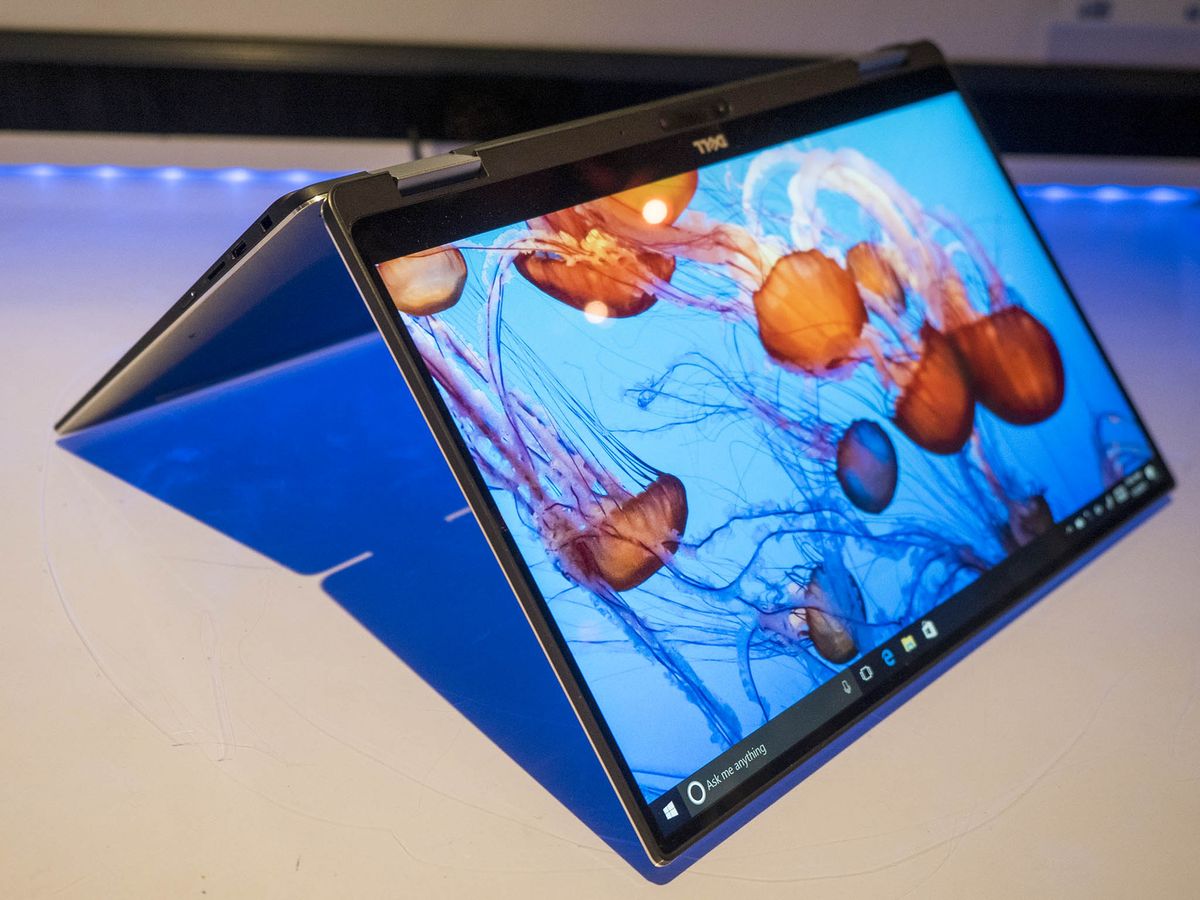
It's the laptop that made Windows notebooks cool — and knocked the MacBook Air off its pedestal — thanks in large part to the machine's head-turning borderless screen. But when Dell launched the XPS 13 in 2015, many observers believed the company simply scored an exclusive part with the new screen.
Wrong.
Dell actually spent two years in deep collaboration with Sharp, perfecting the display on a new laptop that was then internally known as Project Dino. In fact, Dell helped fund the development of the panel.
"We didn't go to Sharp and say, 'Hey, we're going to make a computer. What do you guys have?" said Ed Boyd, senior vice president for product design at Dell. "We said, 'We want to make this.'"
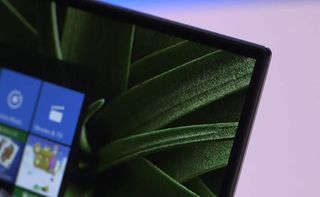
For the new XPS 13 2-in-1 (codenamed Aventador), Dell did a lot more than tweak a winning formula. The company achieved an even thinner and completely fanless design while taking a risk on an entirely different processor, one that doesn't necessarily have the best reputation.

On the eve of the 2-in-1's launch, Dell gave me an exclusive look at how the company brought one of the most compelling convertibles of the year to life, from drawing board to store shelf. Along the way, I got a behind-the-scenes tour of the design, performance and durability labs, as well as access to the engineers, designers and competitive analysts who are dreaming up the future of computing.
A Row of Risk Takers
Staring at a long row of groundbreaking laptops from the last several years in Dell's design center in Austin, Texas, I instantly got a jolt of deja vu. There was the Adamo from 2009, whose scissors-like design raised the keyboard at an angle when opened. At that time, the Adamo was the thinnest laptop in the world, at 0.4 inches.
Get the Windows Central Newsletter
All the latest news, reviews, and guides for Windows and Xbox diehards.
I also instantly recalled the innovative Dell XPS 12, which was ahead of its time in 2012. Its nifty flip-hinge design enabled you to rotate the screen without turning the system itself around. But Dell couldn't use this kind of design for the new XPS 13 2-in-1 and have supernarrow bezels around the screen.
"There was too much mechanical baggage here," said Donnie Oliphant, director of the XPS line.
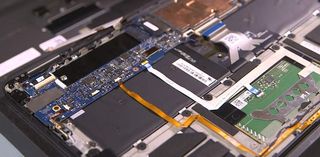
Then I reminisced with the XPS 11 from 2013, which was quite thin and featured a 360-degree hinge that let you quickly switch modes, but there was one nagging issue. The keyboard was completely flat, similar to today's Yoga Book from Lenovo. "We got a little too cute, and we went with a nonmovable keyboard," Oliphant admitted.
The lessons from these and other devices led to the new XPS 13 2-in-1, which is thinner and lighter than the regular XPS 13, and also completely fanless. The device is just 0.32 inches at its thinnest point, and it weighs only 2.7 pounds. Like the regular XPS 13, it crams a 13-inch screen into what has traditionally been the chassis for a device with an 11-inch screen.
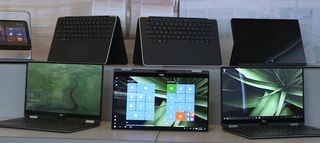
Dell had to ditch some ports to achieve this svelte profile — there's USB-C but no standard type-A ports — but the company wasn't willing to compromise keyboard comfort for the sake of thinness.
"We were looking at shaving, literally, just one-tenth of a millimeter off of the travel," said Oliphant. "But it didn't test to our satisfaction, so we threw that 0.1 millimeters back into the design."
Lab Rats on a Mission
Dell took a big risk with this convertible by opting for Intel's Y Series processor, as opposed to the more powerful U Series chip found in competing systems from HP and Lenovo. But as my trip to the lab (and our subsequent benchmarks) showed, Dell managed to strike an impressive balance between portability and performance.
"There was an incredible amount of focus and investment on optimizing performance, because the XPS 13 2-in-1 uses a Y Series processor," said Frank Azor, vice president and general manager for Alienware and XPS. "We wanted to correct all the misconceptions out there that it's an inferior part."
That reputation comes from Intel's Core M chip, which is what the Y series was called before the company changed the name. In our tests, Core M laptops, like the 12-inch MacBook, have been on the sluggish side. But the XPS 13 2-in-1 is different.
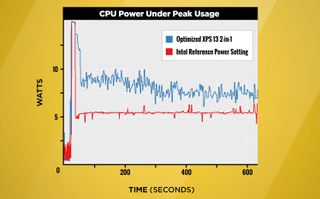
Dell worked closely with Intel to implement a new Dynamic Power Mode that keeps the CPU running longer at its highest level of performance.
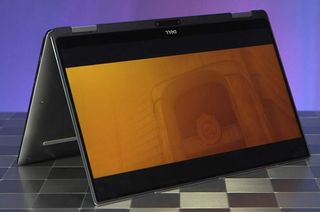
"We have a group of technologists that focus on the way the world could be, and then we have a very robust process that takes us from the way the world could be to way the world will be," said Leo Quintero, vice president of performance engineering at Dell.
That world needed to have a Y Series processor punching above its weight class, but Dell had to put in such a processor without it generating too much heat. As I stared at screens of data coming back in real time from the XPS 13 2-in-1, Alex Shows, a performance engineer at Dell, explained that the system was delivering significantly higher performance than Intel's reference spec for the Y Series chip.
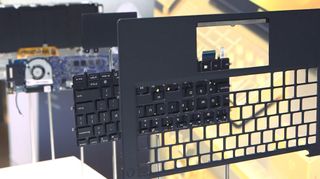
Dynamic Power Mode offers short bursts of speed when you need them up to 10 percent better performance versus the previous-generation XPS 13. Dell did this by balancing the amount and duration of the power boost while monitoring the internal and external surface temperatures of the system.
Think of Dynamic Power Mode as a turbocharger on a smaller car that's fuel-efficient under normal driving conditions.
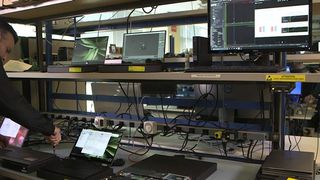
"You need to go right to the edge of power thermals and get there as quickly as you can," said Shows. "You have to be able to go right to the edge and not fall."
And to make sure Dell's system can ride that edge as long as possible, the company made the XPS 13 2-in-1 measure the temperatures in real time at dozens of points in and around the system. These measurements are then plugged into an equation to dynamically throttle the power.
In our review, the XPS 13 2-in-1 indeed scored higher than a close competitor powered by a similar Y series chip, and it didn't get too toasty during use either. Part of the credit for that goes to Dell's choice of materials; carbon fiber simply isn't as conductive as, say, aluminum.
Tearing Down the Competition
It's not unusual for laptop makers to buy and then tear down their competitors' top products, but Dell has turned that tactic into a multiday event. And attendance is mandatory.
"It's not just, 'buy some systems, do a teardown in the lab and let's learn a bunch of cool stuff,'" said Oliphant. "It's a very organized two- to three-day event with a structured set of participants, and each [person] has a role."
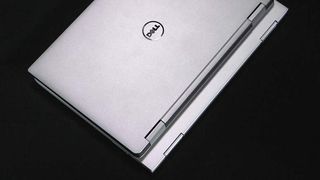
From engineers and product planners to marketers, the goal is to learn what the competition does well and where Dell can gain a competitive advantage. This is part of Dell's rigorous process of putting together a game plan, which the company does for every product and product line.
During one recent teardown event, Dell went to town on the HP Spectre x360, a well-reviewed 2-in-1 that takes a page from the XPS 13's playbook.
"It's a nice-looking box. I can say that," said Azor. "Obviously, they started going to narrow bezels. But based on this, we didn't want to go down the same path."
"Having small bezels on the sides helps one dimension, but then exploding the 'chin' below the display means you're focused on the wrong dimension," said Oliphant. "How wide a system is doesn't matter as much in the real world as how tall a system is when it's open."
He cited the tray table on an airplane as one situation where the more compact frame of the XPS 13 2-in-1 would come in handy.
Dell definitely went its own way when it came to the efficiency of the panel used in the display. The regular XPS 13, which has a 58-watt-hour battery, lasted 7.5 hours longer on Dell's internal battery tests, versus the larger, 60-watt-hour battery in the Spectre x360.
"They put some emphasis on narrowing the left and right bezels, but they didn't invest in the areas where we think there's a huge customer benefit," argued Oliphant, which is the efficiency of the panel and the technology behind the panel."
To be fair, the XPS 13 2-in-1 lasted 8 hours and 27 minutes on our web-surfing battery test, compared to just over 10 hours for HP's 2-in-1. But the Dell has a more compact design and makes due with just a 46-watt-hour battery.
What's Next - Looking 5 Years Out
"Backcasting." It's a term I heard a lot during my trip to Dell's campus, and it's an integral part of the company's innovation process. In a nutshell, backcasting is trying to anticipate consumer behavior as much as five years into the future and then mapping out the steps needed to get there.
"We have a small team of 12 to 15 people, and they look at all of the areas of differentiation we could have," said Oliphant. "And they narrow it down to a shorter list of 20 to 30 [areas] that we believe have a shot to get there by the time a product would launch."
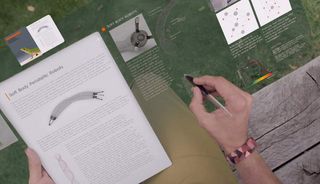
Dell creates playbooks for all sorts of technologies, whether it be LCDs or graphics cards, so a product planner could pick one up and see what the trends are. But it's the way Dell imagines how people will be using cutting-edge technologies five years from now that truly fascinates.
In one recent Dell concept video, a struggling student gets personalized lessons from a digital assistant that tailors these offerings based on skill level, suggesting extra work to help the student catch up. He uses augmented reality glasses in combination with digital devices, such as a tablet whose screen expands into a semitransparent canvas on either side of the slate. He's technically writing in thin air, but the cloud-powered gadget still recognizes the input.
"We're doing this agnostic of Dell," Boyd shared. "We do all this because we want to think about what people will be doing based on the technology trends and user trends in five-plus years' time."
The reason Dell looks so far out is because the company wants to differentiate itself in a crowded market, and because it simply needs time to incubate new technologies to bring the experiences people want to life — even if the end result means tipping off some of the company's biggest foes on where they should focus next.
"So, obviously we're going to enable the competitive set by doing this," said Oliphant. "But if we continue to focus on what the customer is trying to do, the rest will take care of itself."
As I left Dell's campus, I thought about how I might be using tech in five years, and how I might "backcast" that into a product I wanted. Would it be a phone, laptop and tablet in one? A digital implant? Whatever that thing winds up being, I now have a deeper appreciation of how it will come to be.
This article is syndicated from our friends at Tom's Guide. You can read the original article here.
